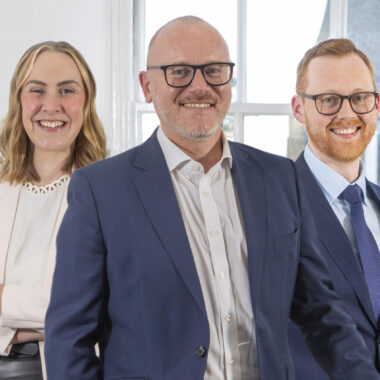Debt Advisory Partner, Tom Cox considers how firms can best manage risk while also making the most of opportunities as the UK economy continues its recovery.
Financing the economic recovery while managing risk
How is the credit landscape looking at the moment?
The good news is that the liquidity remains strong, with a diverse set of credit investors seeking yield.
This news comes from various sources but mainly institutional private capital, which is a trend that we’ve seen accelerate in the past three to five years.
While traditional bank financing still has a key role to play and was critical during the onset of the pandemic, we’re increasingly engaging with private non-bank lenders. These are generally nimble, entrepreneurial firms with a higher tolerance to risk and the appetite to fund businesses, albeit at a higher price point.
How has the pandemic impacted the sector?
The pandemic has created winners and losers, which in some ways has resulted in a two-speed financing environment.
The mergers and acquisitions (M&A) market is bullish and equity valuations are very high. Many people are implementing buy and build strategies, and 2021 has seen a lot of deals happening in both the public and private markets.
While a lot of transactional activity is taking place in tech-enabled industries like healthcare, e-logistics and business services, activity levels in sectors like consumer retail and leisure and hospitality are limited, which points to the remaining uncertainty after the impact of COVID-19.
Many businesses have benefitted from changes to consumer behaviour and will continue to be high performers. Others however are still struggling and don’t know what the next two or three years will look like when faced with significant off-balance sheet liabilities, and uncertain long term consumer behaviour when 19 July arrives.
So while some businesses might be able to leverage highly, others will struggle to refinance because they will continue to be loss making for the next 12 to 18 months and they have even more structural liabilities than they did two years ago.

What are the wider challenges for businesses?
An incredible amount of debt has been injected through state guaranteed loans to support businesses, and this has been combined with other measures such as tax deferrals.
Government intervention has been vital to stabilise a lot of businesses but could be a roadblock in the long term, as a result of documentary conditions that may limit opportunities to invest in your business to build shareholder value until government-backed facilities are paid back. This has left many firms stuck between a rock and a hard place. As a result, I think we’ll see a need for different types of capital coming into businesses.
As previously mentioned, we expect to see institutional private credit providers having a key role here. Many multi-strategy funds have different options available and may be able to solve overleveraged structures with quasi-equity instruments to deleverage the balance sheet and give shareholders an opportunity to rebuild equity value.
What are the challenges for lenders?
The market is very active at the moment. In some respects, there are too many deals and too much volume. Lenders will be asking themselves how they can differentiate themselves so that they’re not all chasing the same assets.
They will also want to determine how they can deliver good risk-weighted returns for investors without doing deals that are too risky. It means their due diligence will be much more thorough as they look to identify firms with a genuinely sustainable performance.
How do firms fund working capital as they come out of the crisis? And what’s the first step?
Many businesses now find themselves in a Catch-22 situation. Some equity investors are struggling to justify funding working capital demands because they have already put money into businesses to keep them from collapsing. If a business is still loss-making in the short to mid-term there will be challenges in securing new facilities.
However, lenders can and will back businesses that have long-term equity support as they can get a better return on that investment, even though it seems riskier.
Firms may need to recalibrate their expectations after 18 months of extraordinary state intervention in the commercial finance market which has seen unprecedented levels of government-backed borrowing. In the current market, it’s essential not to let perfect be the enemy of good – they should be focused on securing a deal that allows them to rebuild. They will need to give potential investors clarity about what they need the funds for and what they will achieve.
Credit is available, but it may not be through the traditional routes they’ve used before so they should be ready to broaden their horizons. Ultimately, that starts with advice from someone who knows the market.





